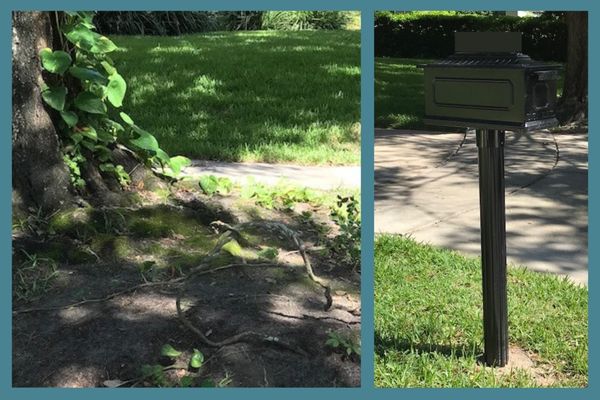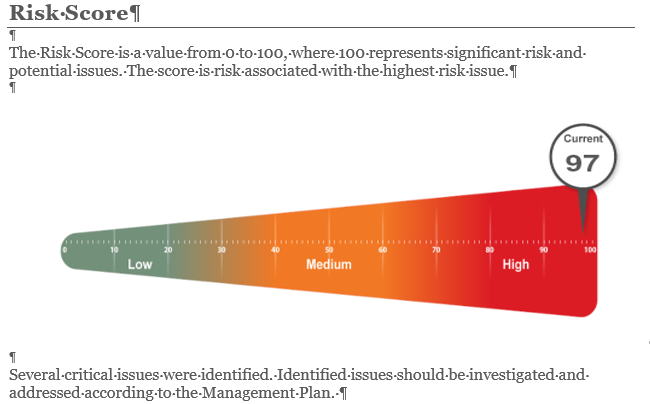Why Do a Network Assessment for Business Strategy & Planning

For 27 years our reliable mailbox stood under the shady oak tree. The simple mailbox did a fine job, collecting the junk mail and serving as an easy target for the birds.
But the time had come for a mailbox refresh and a new bird-free spot. Wrapped around the mailbox was jasmine. With the mailbox gone, it seemed like the jasmine could figure out that its post-clinging was over. It could simply stretch out and get comfortable somewhere else.
In spite of my encouragement, the jasmine relaxed for a day and then bounced back to its old standing position around the non-existent post.

That comfortable habit is how we often approach our technology framework and decisions. "It works just fine" is the typical default. What if just fine – just okay --could be so much better?
Making time for regular technology checkups is just practical, responsible leadership. Instead of thinking about technology decisions as one-and-done checkboxes, consider them active parts of your company's growth strategy.
Your company, customers, clients, the business landscape around you are all continually changing. To achieve your competition advantage, your technology framework needs to easily adapt too.
With the right tools, your technology decision-making can more effectively align with your long-term planning.
1. Schedule automated IT asset management network discoveries. These provide an up-to-date snapshot of the technology infrastructure you depend on. Regardless of the size of your company and network structure, a visual technology roadmap is invaluable.
It gives everyone in the company a single, common starting point, a you-are-here reference.
A network discovery identifies the devices, software, and active users on your network.
Changes can often happen without your even being aware. Your risk exposure increases.
Shadow IT is the practice of a company's employees using technology and services that haven't been approved by the IT department. For companies without formal technology leadership, this is more likely to occur. You leave yourself more exposed to unlicensed software, malware, unpatched software, and loss of company data. The list goes on.
2. Most day-to-day IT support folks don't have the necessary tools and expertise to conduct a proper network discovery. This is where an experienced technology partner can be of value to you. The ROI becomes immediately apparent.
3. Create an action plan to address discovered issues and opportunities.
4. The results of your network discovery become a company-wide working roadmap. This helps prevent the common misalignment between strategy and the right technology to effectively execute. Include this valuable document in every planning meeting.
5. Review your future to-do list, all of the great ideas you would like to get to someday.
How does your current technology framework contribute to getting these done?
Where are the gaps?
You are likely to discover that the implementation is more doable than you thought.
6. The next step is a data discovery that can help uncover the value in the information you collect every day.
This is a short, quick introduction to a different way of technology thinking. The next time you find yourself clinging to the comfortable mailbox, hit pause. Ask yourself, has the mailbox moved and our technology hasn't?
Let's Plan Your Technology Discovery
 Don't forget to add these actionable ideas to your OneNote or other favorite note taking app.
Don't forget to add these actionable ideas to your OneNote or other favorite note taking app.
But the time had come for a mailbox refresh and a new bird-free spot. Wrapped around the mailbox was jasmine. With the mailbox gone, it seemed like the jasmine could figure out that its post-clinging was over. It could simply stretch out and get comfortable somewhere else.
In spite of my encouragement, the jasmine relaxed for a day and then bounced back to its old standing position around the non-existent post.

Our Attitude About Technology is Misaligned with Business Strategy
That comfortable habit is how we often approach our technology framework and decisions. "It works just fine" is the typical default. What if just fine – just okay --could be so much better?
Making time for regular technology checkups is just practical, responsible leadership. Instead of thinking about technology decisions as one-and-done checkboxes, consider them active parts of your company's growth strategy.
Your company, customers, clients, the business landscape around you are all continually changing. To achieve your competition advantage, your technology framework needs to easily adapt too.
With the right tools, your technology decision-making can more effectively align with your long-term planning.
Easy Steps to Start Your Technology Discovery
1. Schedule automated IT asset management network discoveries. These provide an up-to-date snapshot of the technology infrastructure you depend on. Regardless of the size of your company and network structure, a visual technology roadmap is invaluable.
2. Most day-to-day IT support folks don't have the necessary tools and expertise to conduct a proper network discovery. This is where an experienced technology partner can be of value to you. The ROI becomes immediately apparent.
3. Create an action plan to address discovered issues and opportunities.
4. The results of your network discovery become a company-wide working roadmap. This helps prevent the common misalignment between strategy and the right technology to effectively execute. Include this valuable document in every planning meeting.
5. Review your future to-do list, all of the great ideas you would like to get to someday.
Takeaway
This is a short, quick introduction to a different way of technology thinking. The next time you find yourself clinging to the comfortable mailbox, hit pause. Ask yourself, has the mailbox moved and our technology hasn't?
Let's Plan Your Technology Discovery
Thanks for the Tuesday Visit
You're in business to grow and deliver what your customers and clients want most from you.
We're here to help you make that happen.
We're a community of curious learners and business leaders. We talk information, knowledge, tools, and resources to help you and your business thrive.
Knowing the questions to ask your IT provider or internal team is the first step in planning your company's cybersecurity protection.
This free eBook: Talking With Your IT Provider About Cybersecurity gives you the questions to ask and the key listening points.

Grab Your Copy Now
How to Build Your Organization's Technology Roadmap
An automated IT asset management solution is simple to implement and an invaluable new tool in your strategic toolkit.

Grab Your Free eBook Now
Tags: Technology Strategy
. . .
 Linda Rolf is a lifelong curious learner who believes a knowledge-first approach builds valuable client relationships. She is fueled by discovering the unexpected connections among technology, data, information, people and process. For more than four decades, Linda and Quest Technology Group have been their clients' trusted advisor and strategic partner.
Linda Rolf is a lifelong curious learner who believes a knowledge-first approach builds valuable client relationships. She is fueled by discovering the unexpected connections among technology, data, information, people and process. For more than four decades, Linda and Quest Technology Group have been their clients' trusted advisor and strategic partner. Linda believes that lasting value and trust are created through continuously listening, sharing knowledge freely, and delivering more than their clients even know they need. As the CIO of their first startup client said, "The value that Quest brings to Cotton States is far greater than the software they develop."


